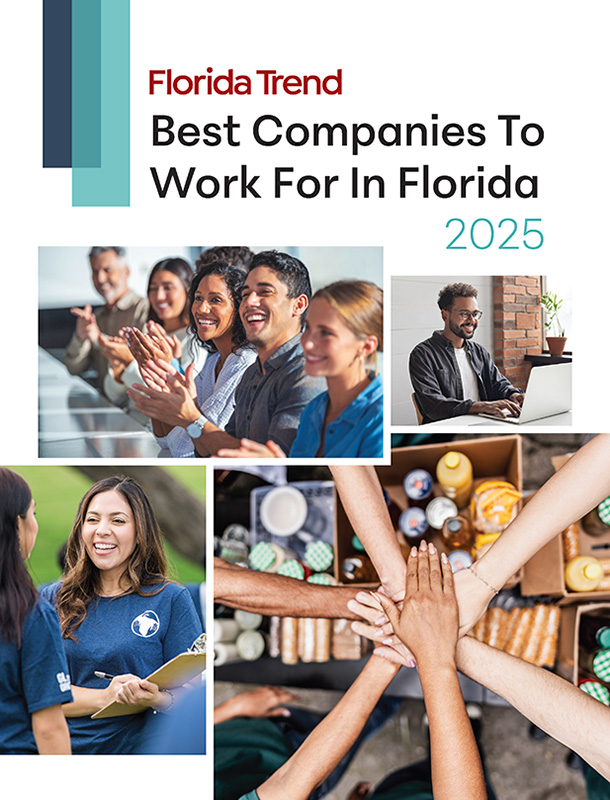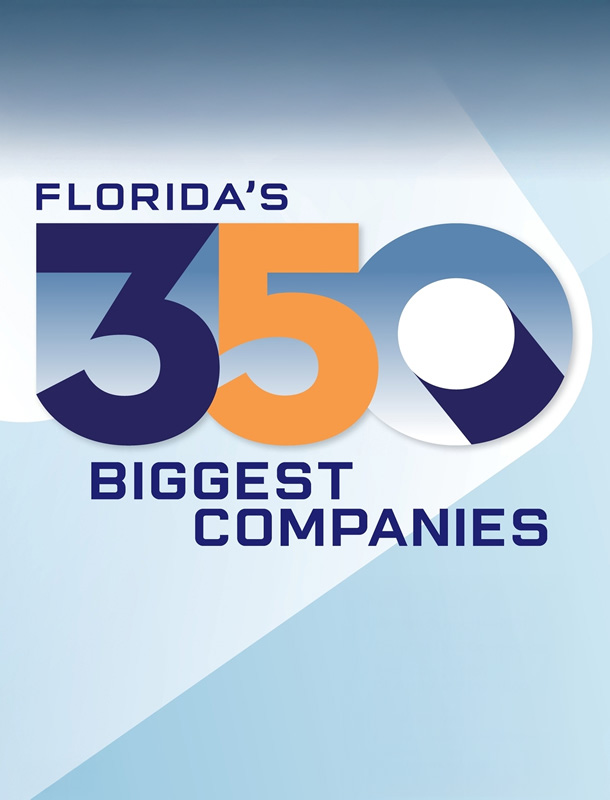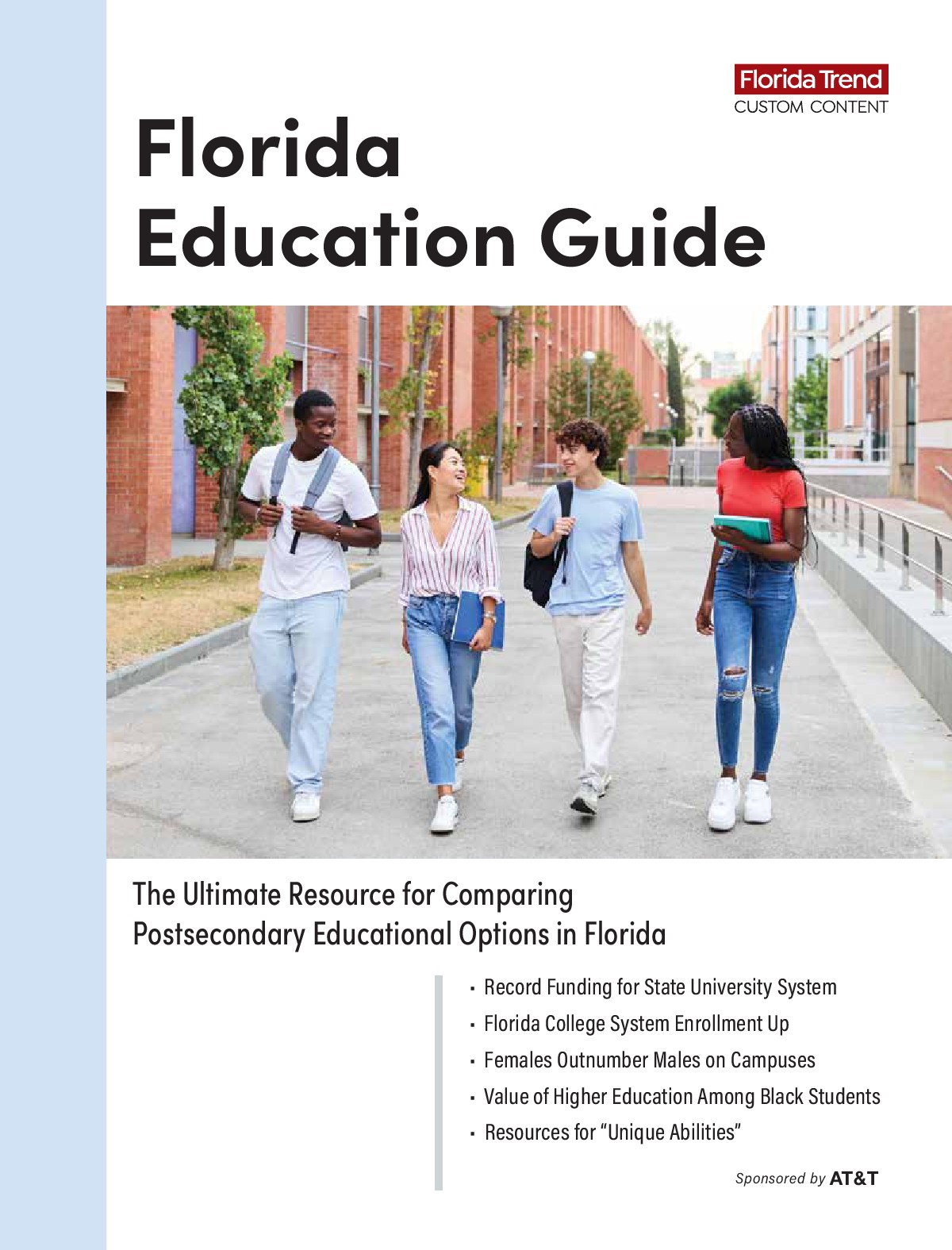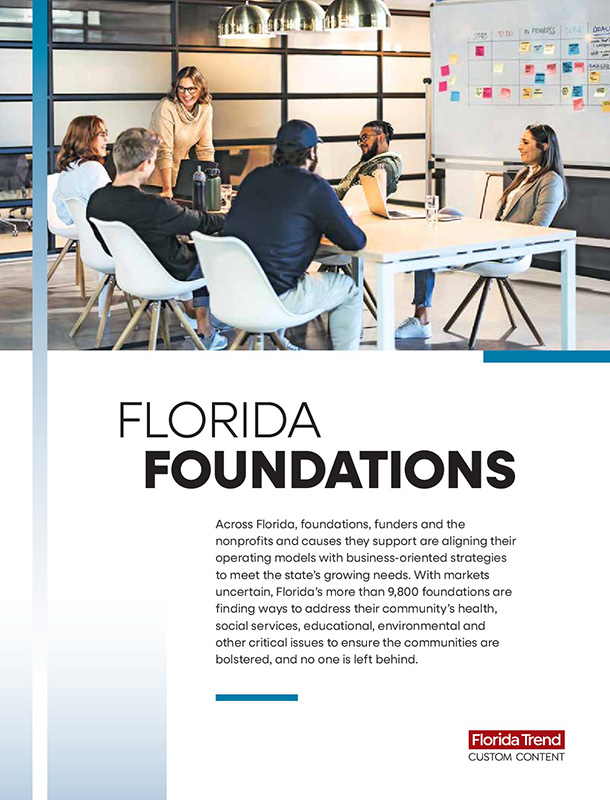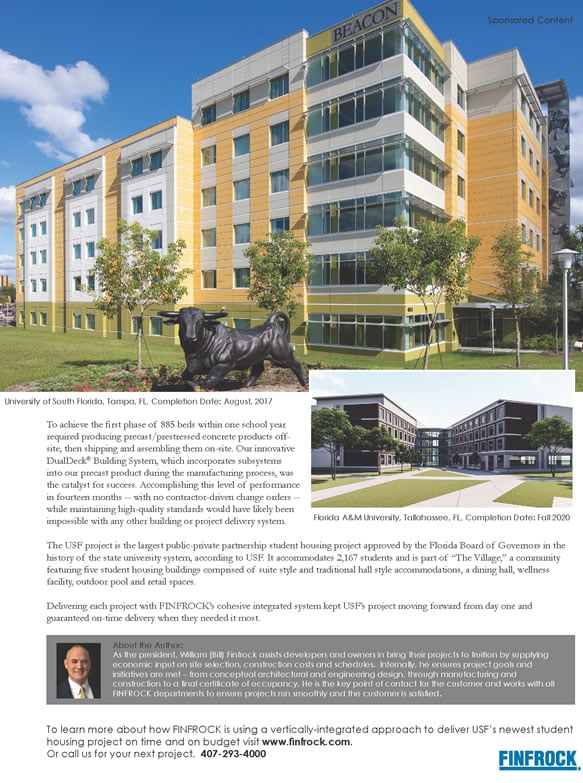For the unrealized dream of Florida’s billion-dollar bid to build a new era of bioscience industry here, look at a 70-acre site in the northern part of Palm Beach County.
By now, the tract on Donald Ross Road was supposed to be well on its way to hosting 1.6 million square feet of high-wage bio-businesses clustered around life sciences research recruit Scripps Florida. Instead, it’s vacant. The University of Florida took title to it in 2022 when UF acquired Scripps Florida. UF got quite the bargain. The county property appraiser’s office values the tract at $47 million. UF paid just $100 for all of Scripps Florida — the 70 acres and the entire research institute across the road in Jupiter.
UF Scripps is “keenly mindful of our mission to provide leadership, innovation, and economic impact for the state of Florida,” says Stacey De-Loye, spokeswoman for what’s now called the Herbert Wertheim UF Scripps Institute for Biomedical Innovation & Technology.
The Scripps Florida story began in 2003 when it became the first of several life-science outfits that Florida and its local governments spent big to get. No check would be bigger than the $310 million that Florida, under then-Gov. Jeb Bush, wrote to La Jolla, Calif.-based Scripps Research to open a branch campus in Florida. Before the Scripps recruitment became public, its cover name in state economic development offices was “Air Conditioning” — on the premise that it would be as transformative for the state as residential indoor air. Comparisons to the coming of Disney and NASA were routinely made.
Palm Beach County, anxious to diversify an economy known primarily for agriculture, construction and tourism, beat out the in-state competition for Scripps by offering land and agreeing to construct facilities. In total, the state and county gave Scripps $579 million.
The idea was that Scripps and the life sciences recruits that followed would generate discoveries, seeding new businesses and serving as magnets that would attract venture capital, pharma companies, other research organizations and allied firms to create a cluster of life-science enterprises, employing 2,800 at Scripps alone after 15 years and tens of thousands in the other enterprises. Florida would become a national leader in biomedical research. The only caution offered was that such growth would take not years, but decades.
Now, after two decades, the outcome has been a mixed bag at best. Only one of the recruited science concerns, the Max Planck Florida Institute for Neuroscience, enticed to Jupiter with $188 million in incentives, remains a standalone entity.
Cleveland Clinic Florida, based in Weston, took over a 100,000-sq.-ft. facility in St. Lucie County that had been custom-built for another recruit, Oregon Health & Science University’s Vaccine and Gene Therapy Institute. That institute had been enticed here with $120 million in incentives, but it left in 2015, two years after its building opened. The University of Central Florida wound up with California-based Sanford Burnham Prebys Medical Discovery Institute’s Orlando-area facility, recruited for $300 million in incentives. Florida International University took over the Torrey Pines Institute for Molecular Studies, recruited for $90 million.
Why infrastructure matters
Scripps lasted longer than most before being absorbed by UF in 2022. The Wertheim UF Scripps Institute as of June employed 484. It took in $55.3 million in grant revenue in its most recent year.
No local major pharma companies sprang from Scripps, and none relocated here. The cluster, as evidenced by the 70 empty acres across from Scripps, didn’t really develop.
Contrast that track record with finance, where the county and Southeast Florida did develop a bona fide cluster. Marquee names in the hedge fund, investment bank, private equity and trading industries from Goldman Sachs to Citadel have located major offices and even headquarters here. Indeed, since the Business Development Board of Palm Beach County, the local economic development organization, started its “Wall Street South” initiative, the county has developed a concentration of investment bankers double that in the typical U.S. county, according to a 2023 study the board commissioned. The county has more than seven times the typical concentration of open-ended investment fund employees. The average salary in finance in the county is $101,829. The county’s 3,452 investment banking employees do even better — averaging $351,269. Finance pays $7.53 billion in salaries in the county (the top sector for the county) and it employed 73,989 (the third highest number of jobs by sector in the county).
What’s more, finance increased its GDP in the county by 184% from 2010 to 2021. Health care/life sciences, meanwhile, increased by 59%, the fifth-ranked showing for a sector in the county and below the county mark for all industries. Health care/life sciences does account for a lot of jobs — it’s the top sector by job numbers with 99,726 — and pays well, though not like finance. The average salary for health care jobs in the county is $74,364. That makes the sector seventh by average, but in the aggregate it’s second only to finance in total personal income brought into the county.
Kelly Smallridge, the board’s CEO, says Palm Beach and southeast Florida had the right “infrastructure” for enticing finance firms. Examples: Air travel connections, Class A office space, amenable culture and government policies, luxury housing, water recreation, lifestyle panache and no income tax. By one count, Palm Beach County has 58 billionaires. Many transplants, rather than receiving government incentives, instead have become donors to education and the arts.
The life science industry, in contrast, is accustomed to a certain level of incentives in making location decisions — a level that Florida doesn’t offer. Compared to the bio “infrastructure” industry hubs in Boston and California, the county lacks pools of veteran life science execs, move-in ready offices and labs, a powerhouse biotech incubator and other factors that would make building a spinoff here or relocating a major pharma operation a no-brainer.
Silver linings
“Companies don’t want to be pioneers,” says John Boyd of Boca Raton-based site selection consulting firm The Boyd Co. “They want successful precedent.” Nevertheless, he says of the Scripps deal, while “we all know how contentious incentives are, I have to say, this incentive money was well spent.”
He likens Scripps to the decision in 2018 by Wall Street giant AllianceBernstein to move to Nashville, American Airlines’ 1978 corporate headquarters move to Texas from New York and the 1992 decision by BMW to put a factory in Spartanburg, S.C., which turned that area into a supply chain hub. The relocation of scientists brought by Scripps and Max Planck validated the county as a place to live for high-skill, high-intellect people in other fields, he says.
Among the positives Scripps produced, says Smallridge, was bringing the county national attention beyond its traditional industries. The Wertheim UF Scripps Institute is a must-see when she takes prospects from any industry on a county tour. Scripps’ presence helped sell Germany-based Max Planck on opening its only North America branch in Jupiter. [see “Max Planck Florida Institute: Finely Focused,” September 2017]. The two collaborate on science with each other and with the complementary FAU Florida Atlantic Stiles-Nicholson Brain Institute, launched in 2015, also in Jupiter. Their combined research needs explain why two renowned microscope makers, Abberior and Zeiss Microscopy Solutions, opened sales and training sites in Jupiter. Zeiss is in FAU’s Stiles- Nicholson while Abberior is at Max Planck.
Smallridge attributes an increase in STEM and STEAM in area private schools and public magnets to the Scripps deal. The research institutions have offered prestigious internships and educational programming locally while local universities have added classes and programs. She also notes the county has 700 health care/ life-science businesses. “A lot of this is taking place because of Scripps coming to Palm Beach County,” Smallridge says.
NYU Langone Health didn’t cite Scripps but did cite the presence of so many of its patients from New York in announcing it would build a medical office tower in downtown West Palm Beach thanks to a $75-million donation from Julia Koch, the world’s second wealthiest woman and the widow of industrialist David Koch. Other health care companies have flocked to Palm Beach County because of its growing, wealthy, aging population. New York-based Hospital for Special Surgery built a facility. Universal Health Services is building a hospital campus. Tampa General has opened offices. Other health care companies include the Boca Raton corporate headquarters of the Modernizing Medicine software company, Boca women’s pharma company TherapeuticsMD, Palm Beach Gardens supplement maker Garden of Life, dental implant company ZimVie and medical device company Depuy Synthes.
Meanwhile, Scripps scientists continue pursuing their research and have had success securing grants and recognition for their work understanding and treating genetic diseases, infectious diseases, brain diseases and disorders, autoimmune diseases and cancer, among others.
The UF acquisition opens new opportunity for Scripps. “A key here is that University of Florida Health brings in the massive financial strength of a major university along with a huge inventory of clinical space, especially since Scripps doesn’t have clinical space for scientists to test new developments,” says Boyd, the site selection consultant. “UF also runs teaching hospitals and operates clinical space for new biomedical innovations that will be rolling out of the new partnership.”
Several months after UF acquired Scripps in 2022, the foundation of major UF donor, inventor and optical care pioneer Herbert Wertheim, the Dr. Herbert and Nicole Wertheim Family Foundation, gave Scripps $100 million, the largest gift in UF history. Scripps researchers can tap UF’s supercomputing cluster for their work. UF also has the well-regarded Sid Martin Biotech incubator. Former UF president Ben Sasse last year said Scripps was the university’s most productive unit in growing externally funded research.
“We’re all immensely proud of the creative, innovative research that has emerged from these laboratories through the years,” says the Wertheim UF Scripps Institute spokeswoman DeLoye. “Since the institute joined the University of Florida, momentum toward the goals for the public bioscience investment has intensified, as collaborations among Gainesville and Jupiter labs also multiply.”
As for the 70 acres, UF Health and Jupiter Medical Center had been planning to put a research hospital on part of the site but backed away from that plan. Whatever comes, “UF is in the driver’s seat,” Smallridge says. “Our goal is to keep it in biotech or at least innovation. We don’t want it to go 100% to apartments.”



